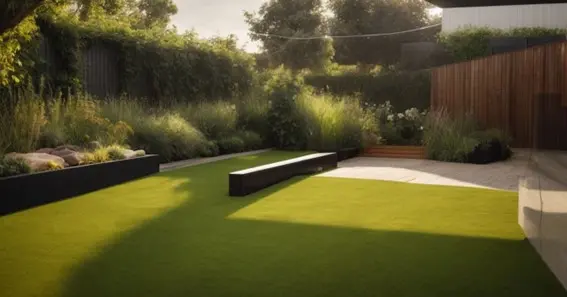The scenic landscapes of Utah are renowned for their natural beauty, but the state faces challenges in maintaining lush greenery amidst its arid climate. However, a revolutionary solution has emerged in the form of artificial turf, offering a sustainable alternative to traditional grass lawns. This article explores the profound impact of synthetic turf on Utah’s landscape, from conservation efforts to aesthetic enhancements. Utah’s distinctive topography and climate pose ongoing challenges to preserving conventional landscapes. However, Artificial Turf in Utah offers a sustainable solution, allowing residents to revel in lush surroundings throughout the year, irrespective of climatic variations. This innovative solution conserves water and reduces the need for harmful pesticides and fertilizers, encouraging a healthier ecosystem for Utah’s diverse wildlife.
Conservation Efforts
Utah’s water resources are precious and limited, making water conservation a priority for residents and authorities. Artificial turf plays a crucial role in this conservation effort by significantly reducing water usage compared to natural grass lawns. With synthetic turf, homeowners can enjoy a verdant landscape without constant watering, conserving millions of gallons of water annually.
Environmental Benefits
Beyond water conservation, artificial turf offers many environmental benefits that contribute to a greener future for Utah. Unlike natural grass, synthetic turf does not require pesticides or fertilizers, reducing harmful chemical runoff into local waterways. Additionally, the absence of lawn mowing eliminates emissions from gas-powered lawn equipment, improving air quality and lowering carbon footprints.
Drought Resistance
Also Read N: Flatter Your Figure: A Guide to Styling Midi Dresses for Petite Women
Utah is familiar with drought conditions, which pose challenges for maintaining traditional lawns. Artificial turf provides a drought-resistant solution that remains green and vibrant even during prolonged dry spells. Its durable synthetic fibers withstand extreme weather conditions, ensuring a year-round green landscape without constant irrigation.
Cost Savings
Also Read P: A Comprehensive Guide to Air Conditioning Installation in Mosman
In addition to its environmental benefits, artificial turf offers significant cost savings for homeowners and businesses. While the initial investment may be higher than natural grass, the long-term savings in water bills, lawn maintenance, and landscaping services make it a cost-effective choice in the long run. Furthermore, artificial turf requires minimal upkeep, freeing up time and resources for other priorities.
Aesthetic Enhancements
Beyond its practical advantages, artificial turf enhances the aesthetic appeal of Utah’s landscape. Its lush green appearance contrasts with the desert surroundings, adding beauty and vibrancy to residential neighborhoods, commercial properties, and public spaces. With various shades and textures available, artificial turf offers endless design possibilities to suit any architectural style or landscaping vision.
Community Impact
The widespread adoption of artificial turf in Utah has ripple effects that extend beyond individual properties. By transforming barren landscapes into vibrant green spaces, artificial turf fosters a sense of community pride and enhances residents’ overall quality of life. Parks, playgrounds, and sports fields benefit from the durability and versatility of artificial turf, creating safe and inviting recreational areas for all to enjoy.
Conclusion
As Utah grapples with water scarcity and environmental challenges, artificial turf emerges as a sustainable solution with far-reaching benefits. From water conservation and cost savings to aesthetic enhancements and community impact, synthetic turf is paving the way for a greener future in Utah’s landscape. By adopting this pioneering technology, residents and businesses are essential to fostering a future marked by sustainability and improved environmental health for future generations.










